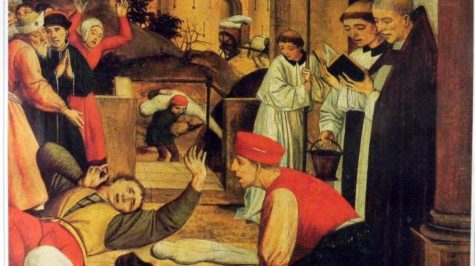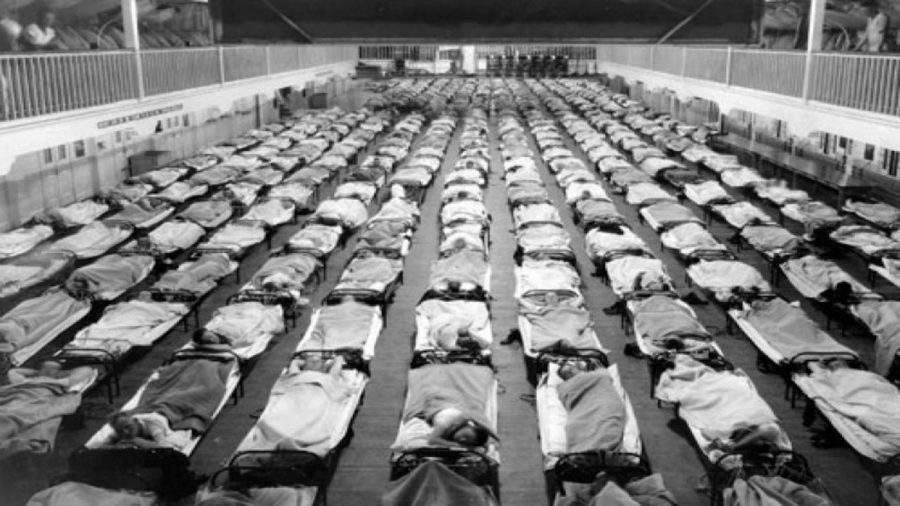Pandemic, Media, and the Lessons of History
The spread of COVID-19 is unprecedented in our lifetime, but the longer view of human history offers lessons on what and what not we should do.
At present, the spread of COVID-19 pales in comparison to the 1918 Spanish Flu, which infected over a third of the world’s population.
The New York Times recently suggested that, in an attempt to quell anxiety, people in quarantine should start journaling. It’s a great method of self-expression and, after all, we are living through a historical event — something like this will (hopefully) occur once in a lifetime.
The issues that humanity is facing as individuals, communities, countries, and even as a species in this interconnected and “flat” world are unique. There are calls for the institution of a Universal Base Income, a previously radical ideal; there are luxury cruise ships being turned into working hospitals, anchored in harbors; stores across the nation are closed, and a surge in unemployment numbers threatens to debilitate the economy; and millions of students across the globe have been robbed of a traditional education.
But a historical perspective in our time of crisis can be illuminating. Such problems are entirely new to our brave new world, but the viruses themselves are as old as their carriers. There have always been epidemics and a corresponding media reaction.
Even in the Middle Ages, long before modern medicine and even before the printing press, there were newspapers reporting on perhaps the most commonly known pandemic, the Bubonic plague. The plague itself originated in China and came across to Italy with merchant ships, before quickly spreading across the European continent. Students are often taught that those were dark times. Times were indeed despairing — the Bubonic plague wiped out roughly 100 million over its 400-year lifespan — and medieval journalists, most often members of the clergy, wrote fanatically about the virus.
One such chronicle, dating to the early 1350s described the Bubonic plague as a “great mortality” that “devoured such a multitude of both sexes that no one could be found to carry the bodies of the dead to burial, but men and women carried the bodies of their own little ones to church on their shoulders and threw them into mass graves, from which arose such a stink that it was barely possible for anyone to go past a churchyard.”
Even in the early 1600s, Europe was still suffering from the blight of plague, and with inadequate measures of quarantining in otherwise over-populated and unsanitary living conditions, there were deadly outbreaks all over. With modern epidemiology still 200 years away, such outbreaks were often credited to an angry God, punishing his unruly and chaotic children. A 1664 edition of the London Newes ran the headline “THE GREAT PLAGUE! MANY MORE DEATHS EXPECTED” and described that, despite efforts of “hindering the further spreading and increase of the Plague”, they cannot overcome a God who has “decreed judgement upon a people.”
While the Bubonic plague is still around, the last major outbreak in the western world came in Marseilles in 1720. The reprieve from plagues, however, was relatively short-lived, as The Third Cholera pandemic struck in the mid 1800s. Compared to its deadly predecessor, this cholera outbreak killed a relatively small one-million people. It was unique, however, in that, unlike the Europe-centered Bubonic plague, it stretched to America and Africa, which previously were largely untouched by European interference.

It wasn’t until John Snow and his 1856 study on contaminated water, the source of cholera, that any progress was made. His widely published media, On the Mode of Communication of Cholera, revolutionized germ-theory and changed the media’s relationship with epidemics. With previous pandemics, from the Plague of Justinian in the 500s to the Bubonic plague, journalists and newspapers were without epidemiology, and without real evidence as a result. But Snow was republished in medical journals like the Edinburgh Medical Journal, and knowledge of the pandemic’s cause provided the tool to prevent the spread of cholera and misinformation.
Seventy years after John Snow’s groundbreaking paper, yet another pandemic struck the world: the Spanish Flu. By this time, epidemiology had developed significantly. The causes of diseases like tuberculosis and anthrax were identified, petri dishes were widely used, and patients were often given chest x-rays to help diagnose conditions. There were also both blood and urine tests for the flu.
Journalism, too, had developed significantly. The rag paper of the 1800s was replaced by wood pulp and automatic type-setting allowed for a daily morning newspaper. Media was developing into what was then called “jazz journalism,” the practice of reporting and highlighting the salaciousness of society, from murder trials to sex scandals. The developments in journalism, as well as in epidemiology, were a stark contrast to the death that WWI brought home, and each was tested during the ensuing pandemic.
Unfortunately, both epidemiology and journalism failed this test. Though patients were diagnosed by modern scientific methods, those who contracted the flu were treated without such measures. They were most often treated according to their symptoms. Patients were given aspirin and epinephrine if they were lucky, and medicinal herbs if they were not. Newspapers neglected to convey the severity of the flu as well, often sacrificing space for flashier articles.
One newspaper, the Belfast Evening Telegraph, designated only two inches of column space to news on the Spanish flu. In the Chariton Courier, such news was placed below a headline that read, “Airplanes are frequently seen going over the county at high altitudes,” and what coverage the inflicted did receive was often unwanted. Across the pond in Chambersburg, PA, the Public Opinion Newspaper was publishing ticker-like updates on the ill: “Manager Stanley of the Chambersburg News Agency, and his whole family are prostrated by flu at their home, corner of Lincoln Way West and Franklin Street.” Eventually, the news organizations came around, and headlines almost exclusively focused on the pandemic, including how it was transmitted. It was too late, though, and 50 million people eventually would die, 600,000 in America alone.
The CDC estimates that, without proper precautions, the current coronavirus might take the lives of more than three times that number of Americans. New York City alone has a doubling rate of three days, and hospitals are running low on beds across the country. The economy is also suffering. The Dow Jones is down 31% from January, and jobless claims have already quadrupled–and may surpass two million within the week.

Needless to say, there’s plenty of bad news and plenty of reminders of it. With almost every news outlet reporting on the coronavirus, there appears to be a surplus of information. There are articles on everything from death counts to self-help guides in quarantine. It’s almost enough to be buried under.
And it’s almost enough to seem unnecessary — but it’s important to learn from the past. It’s important to understand the danger of the pandemic, the danger of misinformation, and the danger of neglect, and to be an informed consumer of the information that is readily available.
The problems facing humanity today are unique to the 21st century, but well-intentioned media reporting that relies on expert sources can make this pandemic unique in human history, as well — it has the opportunity to quell the spread faster than ever before.

Jonathan Ross is a senior at NASH. He enjoys brewing kombucha, writing poetry, and starting conversations.


